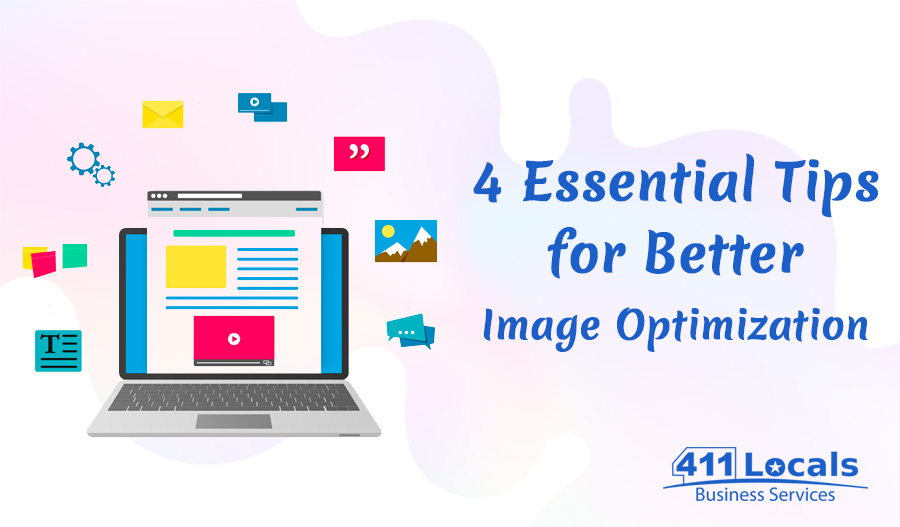
A picture is worth a thousand words. Of course, you have heard that phrase before. But, as a web designer and SEO professional, have you ever thought that the right image, in the right place on your site can spare you all those thousand words which your audience may not have the patience to read? Then again, you need content for bots to crawl. This is where proper image optimization comes in. In today’s 411 Locals blog, we will be sharing our tips on how to optimize images the right way.
Before We Begin
Even though making your images search engine friendly should be at the top of your “to optimize” list, this does not mean less effort on crafting a killer copy and having a balanced amount of content on your website. All recent Google updates have been supporting their “content is king” strategy, so do not underestimate content in any way.
As for the question of why care about image optimization, the answer is simple. Optimizing images matters beyond higher page speed. It is about overall better SEO, and we really know our craft when it comes to that. After all, we were recognized as a top Ad Agency on DesignRush.
The Tips
#1 Choose Page-Relevant Images Only
It may seem like a logical first step, but many people actually skip it. We will not go into detail because we already covered the topic in a previous blog post. The essence, however, is to choose industry-relevant images that can resonate with your audience.
#2 Choose the Right File Type
Search engines love high-resolution images. For example, if you are an online retailer, you will want to opt for JPEGs as they provide the best quality/file size ratio. For large product images, you can choose thumbnails and certainly not GIFs. As for PNGs, their small size makes them a great alternative to GIFs and JPEGs, but try using PNG-8 instead of PNG-24 when it is about product images.
#3 Do Not Underestimate Captions
Just like URLs, image captions are also crawled by bots. In other words, if people use keywords associated with your caption, they will be able to find your page listed in the SERPs. Beware of using misleading image captions as they will do you no good. People will click away as soon as they sense they have been misled and your bounce rate will spike.
An easy example of a good caption can be the following: if you are running an online clothing store, name your image (a floral t-shirt made of cotton, for example) with “Floral Cotton T-shirt.JPG” instead of the auto-generated “IMG10052.JPG.”
#4 Your Alt Texts Are Just as Important
Alt texts, also known as alternative text and alt attributes, are the text alternative to your images that appear when a browser struggles to render them. Alt attributes are used for better web accessibility and if you add relevant keywords in them, you will boost your SEO.
Using the above example, here is how the source code of an alt text will look like:
<img src="Floral Cotton T-shirt.jpg" alt="Floral Cotton T-shirt">
In a nutshell, alt texts require simple language, no keyword stuffing, and it is a good idea to include serial/model numbers if you are running an e-commerce business. Alt attributes are not suitable for decorative images as you may be penalized for overoptimization.
If image optimization, much like all other aspects of SEO, sounds like too much work for you, you can always delegate your online presence to our SEO company. We would love to help your small business reach new heights!
Stay tuned for our next topic!


